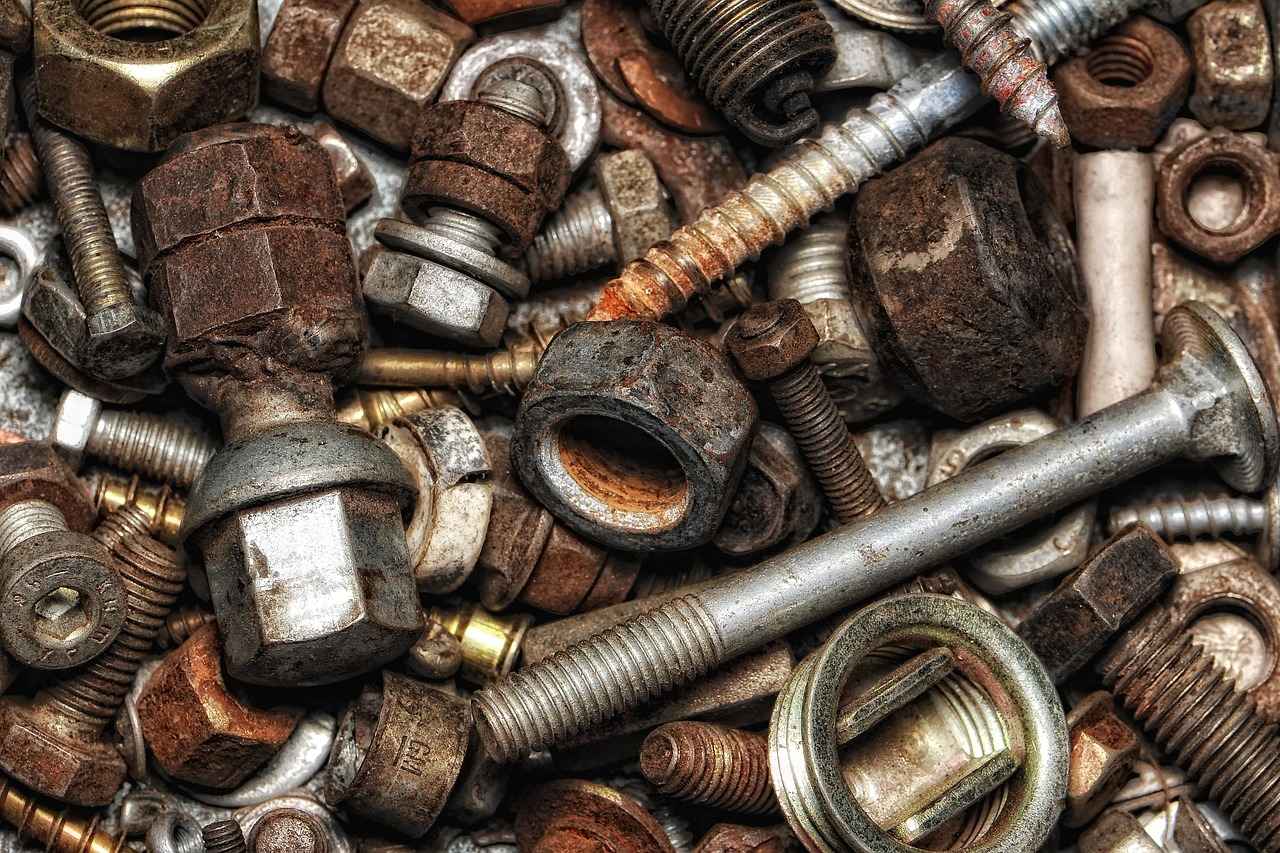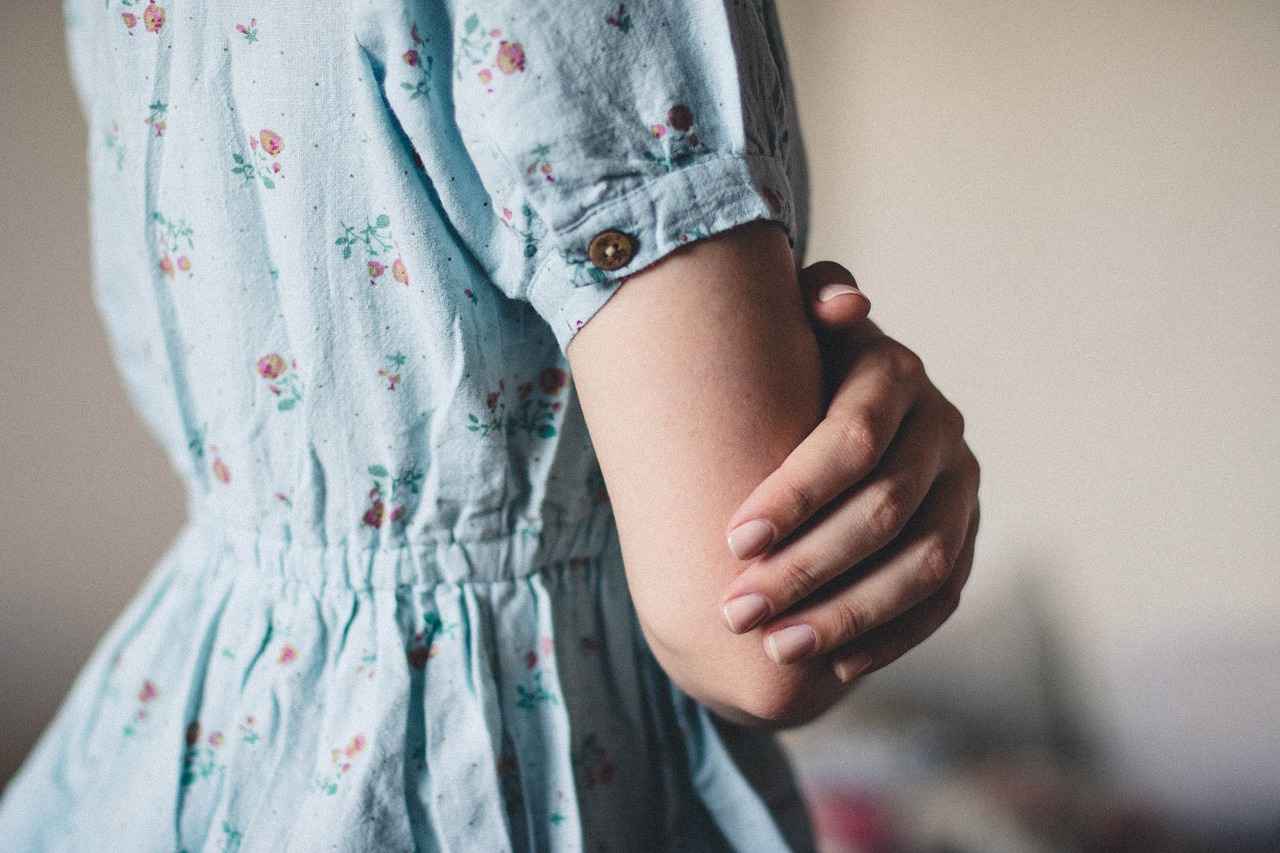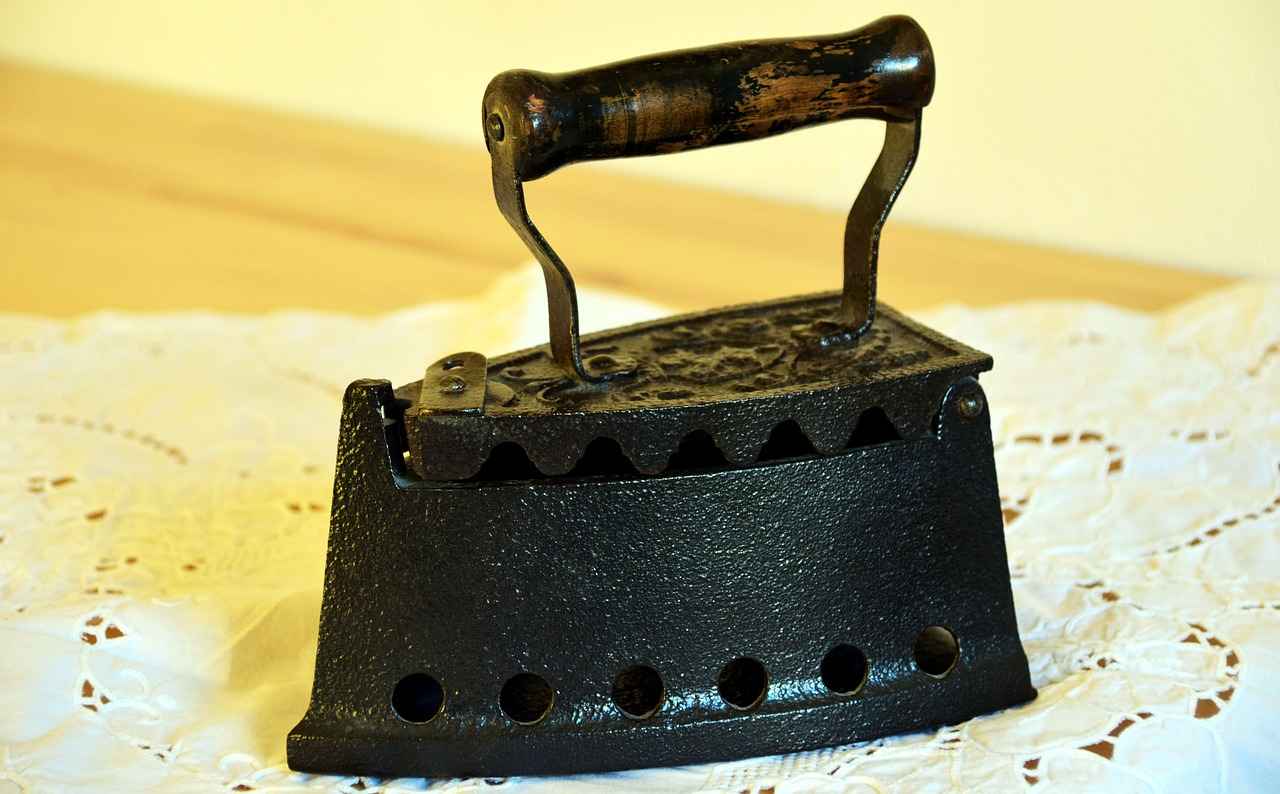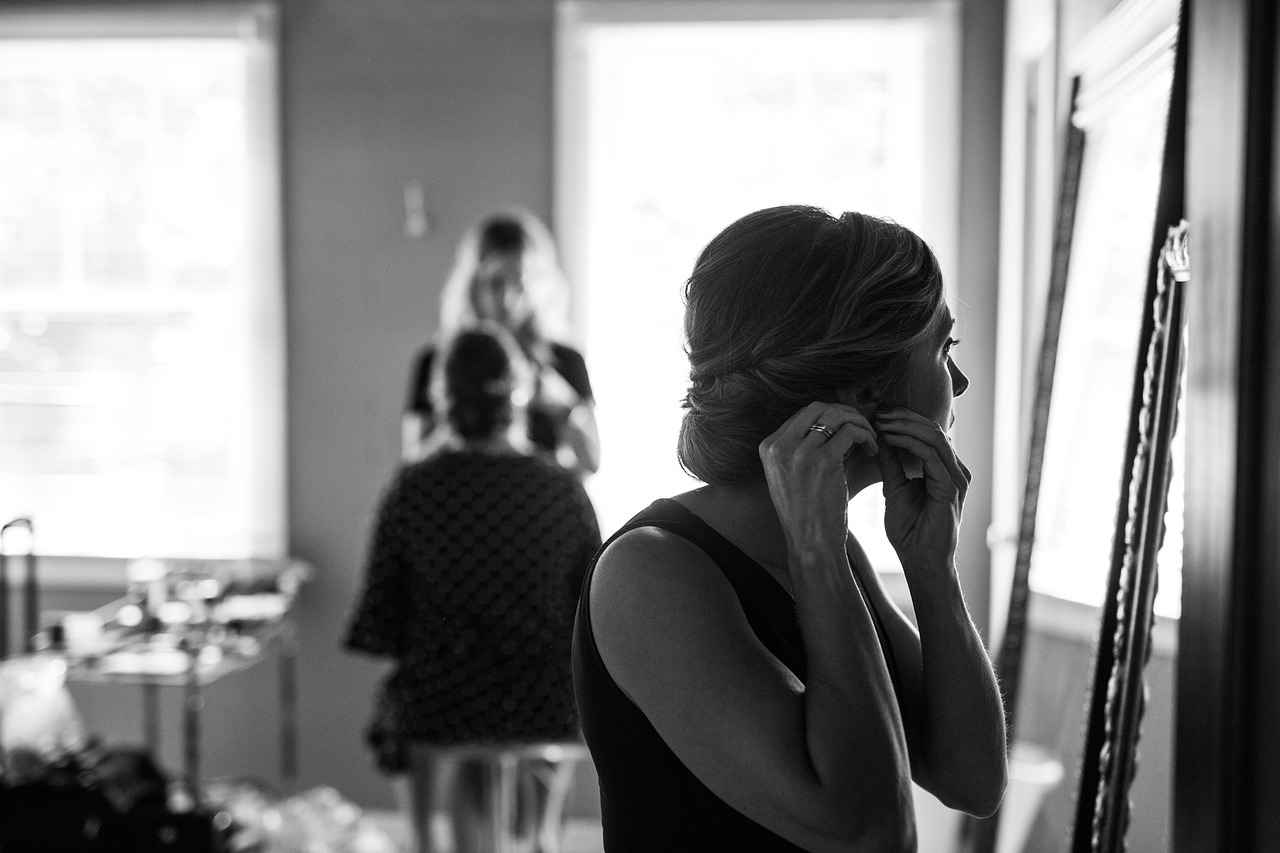This article provides expert insights and practical tips on how to effectively iron a slip dress, ensuring you maintain the fabric’s integrity while achieving a polished look. Ironing a slip dress can be daunting due to the delicate materials often used, but with the right approach, you can achieve a beautifully pressed garment.
Why Is Ironing a Slip Dress Important?
Understanding the significance of ironing a slip dress can help you appreciate the impact of a well-pressed garment on your overall appearance and confidence. A smooth slip dress enhances your silhouette and creates a sophisticated look, making it essential to iron it properly.
What Fabrics Are Commonly Used in Slip Dresses?
Slip dresses are often made from delicate fabrics like silk, satin, or polyester. Each fabric requires specific care techniques to avoid damage during ironing. For instance, silk may scorch at high temperatures, while polyester can melt if exposed to direct heat.
How to Prepare Your Slip Dress for Ironing?
Proper preparation is key to avoiding mishaps. Start by checking the care label to understand the fabric type. Gather necessary tools, including an iron, ironing board, and a protective cloth. Make sure your slip dress is clean and slightly damp for better results.
What Tools Do You Need for Ironing a Slip Dress?
- Iron: Choose one with adjustable temperature settings.
- Ironing Board: A stable surface is crucial for effective ironing.
- Pressing Cloth: This will protect your dress from direct heat.
What Temperature Settings Should You Use?
Different fabrics require different heat settings. For silk, set your iron to a low temperature; for satin, a medium setting is ideal. Always start with the lowest setting and gradually increase it if necessary.
How to Use a Pressing Cloth Effectively?
A pressing cloth is essential for preventing direct heat from damaging your slip dress. Place the cloth over the fabric and then apply the iron on top. This method allows steam to penetrate while protecting the delicate fibers.
Should You Iron Your Slip Dress Wet or Dry?
Ironing techniques can vary based on whether the fabric is damp or dry. Ironing while the dress is slightly damp can help remove wrinkles more effectively. However, avoid soaking the fabric, as excess moisture can lead to water stains.
What Are the Best Techniques for Ironing a Slip Dress?
Mastering specific ironing techniques can enhance your results. Start with the bodice and work your way down. Use smooth, even strokes and pay special attention to seams and straps, as these areas tend to wrinkle more.
How to Remove Stubborn Wrinkles from Your Slip Dress?
Stubborn wrinkles can be a challenge. If the usual methods don’t work, try using steam or a fabric spray designed for delicate materials. Always test on a small area first to ensure there’s no damage.
What Are Common Mistakes to Avoid When Ironing?
- Using too high a temperature.
- Ironing directly on the fabric without a pressing cloth.
- Neglecting to check the care label.
How to Care for Your Slip Dress After Ironing?
Proper post-ironing care can prolong the life of your slip dress. Hang it up in a cool, dry place to maintain its shape. Avoid folding it to prevent new wrinkles from forming.
When to Seek Professional Help for Ironing?
Sometimes, professional help is the best option. If your slip dress is made from a very delicate fabric or has intricate detailing, consider taking it to a dry cleaner for ironing to avoid potential mishaps.

Why Is Ironing a Slip Dress Important?
Ironing a slip dress is not merely a chore; it is an essential step in presenting yourself with elegance and sophistication. Understanding why ironing a slip dress is important can significantly enhance your overall appearance and boost your confidence. A well-pressed garment can transform your look, making it more polished and refined.
Firstly, wrinkles can detract from the beauty of a slip dress. The soft drape and flow of the fabric are best showcased when it is smooth and free from creases. When you wear a wrinkled dress, it can give off an impression of carelessness, which is the opposite of what many aim to convey. By taking the time to iron your slip dress, you ensure that it hangs beautifully on your body, highlighting your figure and style.
Moreover, a slip dress often represents a versatile piece in your wardrobe, suitable for both casual outings and formal events. When you invest in the time to iron it, you are effectively maximizing its potential. A well-pressed slip dress can easily transition from day to night, making it a reliable choice for various occasions.
Another critical aspect to consider is the psychological impact of wearing a neatly pressed garment. When you know that your dress looks impeccable, it can significantly improve your self-esteem. You may find yourself standing taller, smiling more, and exuding confidence. This boost in self-assurance can enhance your interactions with others, making social situations more enjoyable.
Additionally, understanding the fabric of your slip dress is crucial. Different materials, such as silk or satin, require specific ironing techniques to maintain their quality. By learning how to properly care for your slip dress, you not only prolong its life but also ensure that it continues to look its best. This knowledge empowers you as a wearer, allowing you to take pride in your clothing choices.
In summary, the importance of ironing a slip dress extends beyond aesthetics. It encompasses the presentation of your personal style, the versatility of your wardrobe, and the confidence you project. By appreciating these factors, you can make informed decisions about how to care for your slip dress, ultimately enhancing your overall fashion experience.

What Fabrics Are Commonly Used in Slip Dresses?
Slip dresses are a timeless fashion staple, often celebrated for their elegance and versatility. However, the beauty of these dresses is largely attributed to the delicate fabrics used in their construction. Understanding the various materials is essential for proper care and maintenance, especially when it comes to ironing.
- Silk: Known for its luxurious feel and natural sheen, silk is a popular choice for slip dresses. This fabric drapes beautifully and offers a flattering silhouette. However, it is also quite delicate and can be easily damaged by high heat. When ironing silk, it’s crucial to use a low temperature setting and a pressing cloth to avoid burns.
- Satin: Satin is another favored fabric for slip dresses, often made from silk or polyester. It has a smooth, glossy surface that enhances the garment’s elegance. Like silk, satin requires careful handling during ironing. Using a medium heat setting and a pressing cloth is recommended to prevent any unsightly marks.
- Polyester: This synthetic fabric is known for its durability and resistance to wrinkles, making it a practical choice for slip dresses. Polyester can withstand higher temperatures compared to silk and satin. However, it’s still advisable to start with a lower heat setting to avoid melting the fibers.
- Chiffon: Lightweight and airy, chiffon is often used as an overlay for slip dresses. This fabric is delicate and can easily become misshapen if not handled properly. When ironing chiffon, use a low heat setting and a pressing cloth to maintain its structure.
- Lace: While not a traditional slip dress fabric, lace can be incorporated into designs for added texture and detail. Ironing lace requires a gentle touch; it’s best to iron it inside out and use a low temperature to avoid damaging the intricate patterns.
Each of these fabrics brings its unique charm and challenges. Understanding their properties not only helps in achieving a polished look but also ensures that your slip dress remains in pristine condition. Always check the care label for specific instructions related to your garment, as different brands may have varying recommendations.
In summary, the fabric of a slip dress plays a crucial role in its overall appearance and care requirements. Whether you choose silk, satin, polyester, chiffon, or lace, being mindful of how to handle and iron these materials will significantly enhance the longevity and beauty of your garment.

How to Prepare Your Slip Dress for Ironing?
Proper preparation is essential for achieving a flawless finish when ironing your slip dress. By taking the time to carefully prepare, you can avoid mishaps that may damage the delicate fabric. Here’s how to effectively prepare your slip dress for ironing.
Before you start, always check the care label on your slip dress. This label provides crucial information regarding the appropriate ironing temperature and whether the fabric can be ironed at all. For example, silk may require a low heat setting, while polyester can often withstand higher temperatures. Ignoring this step could lead to irreversible damage.
Slip dresses can be made from various materials, including silk, satin, and polyester. Each type has unique characteristics that influence how it should be treated:
- Silk: Requires gentle handling and low heat.
- Satin: Can be sensitive to high temperatures; use a pressing cloth.
- Polyester: More durable but still needs careful attention to avoid melting.
Having the right tools at your disposal can make the ironing process much smoother. Ensure you have:
- Iron: A steam iron is often best for delicate fabrics.
- Ironing Board: A stable surface is essential for effective ironing.
- Pressing Cloth: This helps protect the fabric from direct heat.
Set up your ironing board in a well-lit area to clearly see the fabric’s details. Ensure that your iron is clean to prevent any residue from transferring onto your dress. If your iron has a steam function, fill it with water, as steam can help remove stubborn wrinkles.
Before ironing, examine your slip dress for any stains or damages. Treat any stains with appropriate stain removers and allow them to dry before proceeding. If there are any tears or loose seams, consider mending them to avoid further damage during the ironing process.
To further prepare your dress, consider lightly misting it with water if it is dry. This can help relax the fibers, making it easier to remove wrinkles. However, ensure you don’t soak the fabric, as excessive moisture can lead to water spots.
By following these preparation steps, you will set yourself up for success when ironing your slip dress. Proper care and attention to detail can help maintain the integrity of the fabric while ensuring a polished appearance.

What Tools Do You Need for Ironing a Slip Dress?
When it comes to ironing a slip dress, having the right tools is crucial for achieving a flawless finish without damaging the delicate fabric. Using the appropriate equipment not only makes the ironing process smoother but also ensures that your dress retains its beauty and integrity. Below, we delve into the essential tools you need for ironing a slip dress effectively.
- Iron: A good-quality iron is the cornerstone of your ironing toolkit. Look for an iron with adjustable temperature settings, as different fabrics require different heat levels. A steam function can also be beneficial for removing stubborn wrinkles.
- Ironing Board: A sturdy ironing board provides a flat surface that makes it easier to iron your slip dress. Ensure that the board is height-adjustable for comfort and has a heat-resistant cover.
- Pressing Cloth: This is a must-have for protecting your slip dress from direct heat. A lightweight cotton cloth works well, as it allows steam to pass through while safeguarding the fabric from burns.
- Water Spray Bottle: A spray bottle filled with water can help in dampening the fabric slightly before ironing. This method is particularly effective for removing deep-set wrinkles without using excessive heat.
- Lint Roller: Before you start ironing, it’s wise to remove any lint or dust from your slip dress. A lint roller will help keep your dress looking pristine and ready for pressing.
- Clips or Weights: If your slip dress is prone to shifting while you iron, consider using clips or weights to hold it in place. This will ensure that you can work on it without any interruptions.
Gathering these tools will not only streamline the ironing process but also provide you peace of mind knowing that your slip dress is protected. It’s essential to remember that delicate fabrics like silk or satin can easily be damaged by high heat, so always use a pressing cloth and adjust your iron’s temperature according to the fabric type.
Additionally, ensure that your ironing board is clean and free from any residue that could transfer onto your dress. A well-maintained setup will contribute significantly to achieving a polished look.
In conclusion, investing in the right tools for ironing your slip dress is a small but vital step in maintaining its elegance and longevity. By following these guidelines and using the appropriate equipment, you can confidently tackle the task of ironing and keep your slip dress looking its best.

What Temperature Settings Should You Use?
When it comes to ironing a slip dress, one of the most crucial aspects is understanding the temperature settings required for different fabrics. Each fabric type has its own unique properties and heat tolerance, making it essential to adjust your iron accordingly to avoid damaging your garment.
Using the appropriate temperature setting is vital to maintain the fabric’s integrity. High heat can scorch delicate materials like silk and satin, while lower settings may not effectively remove wrinkles from sturdier fabrics like polyester. Therefore, understanding the specific needs of your slip dress can enhance its longevity and appearance.
- Silk: Use a low temperature setting (around 250°F or 120°C). Always iron on the reverse side and consider using a pressing cloth to prevent direct contact.
- Satin: Similar to silk, satin requires a low to medium heat setting (approximately 300°F or 150°C). Again, a pressing cloth is recommended to avoid shiny marks.
- Polyester: This fabric can handle a medium heat setting (around 350°F or 180°C). It’s more forgiving, but still requires caution to prevent melting.
- Rayon: Rayon is delicate and should be ironed on a low setting (about 300°F or 150°C). Use steam to help release wrinkles without risking damage.
Before you start ironing, always check the care label on your slip dress. This label provides essential information regarding the recommended heat settings. If the label is missing or unreadable, conduct a test on a hidden area of the fabric with your iron set to a low temperature. Gradually increase the heat if wrinkles remain.
Using an incorrect temperature can lead to a variety of issues, such as:
- Burnt fabric: High heat can scorch or burn delicate fabrics, leading to irreversible damage.
- Shiny spots: Ironing at too high a temperature can create shiny patches on fabrics like satin and silk.
- Melting: Synthetic fabrics, such as polyester, can melt if exposed to excessive heat.
To ensure you achieve optimal results while ironing your slip dress:
- Always start with the lowest temperature and gradually increase it as needed.
- Keep the iron moving to avoid prolonged heat exposure on any one spot.
- Use steam settings if available, as they can help release wrinkles without direct contact.
By understanding the specific temperature settings required for your slip dress’s fabric, you can achieve a beautifully pressed look without the risk of damage. Always prioritize fabric care and take the time to adjust your iron accordingly for the best results.

How to Use a Pressing Cloth Effectively?
When it comes to ironing delicate fabrics like those used in slip dresses, using a pressing cloth is an essential technique that can significantly enhance the process. This simple tool can act as a barrier, protecting your garment from direct heat, which can cause burns, shine, or even melting of the fabric. Below, we delve into the best practices for using a pressing cloth effectively while ironing your slip dress.
A pressing cloth is typically made from a lightweight, breathable material that can withstand heat. It serves to diffuse the heat from the iron, ensuring that the fabric underneath is not exposed to direct contact. Common materials for pressing cloths include cotton, muslin, or even a clean cotton handkerchief.
Using a pressing cloth is crucial for several reasons:
- Prevents Damage: Direct heat can scorch or burn delicate fabrics like silk and satin. A pressing cloth acts as a protective layer.
- Avoids Shine: Some fabrics can develop a shiny appearance when ironed directly. A pressing cloth helps maintain the fabric’s original finish.
- Enhances Results: It allows for even heat distribution, leading to a smoother and more professional finish.
- Choose the Right Cloth: Select a pressing cloth that is appropriate for the fabric of your slip dress. Ensure it is clean and free from any stains.
- Set the Correct Temperature: Adjust your iron to the appropriate setting for the fabric type of your slip dress. Always start with a lower heat setting to avoid damage.
- Position the Pressing Cloth: Lay the pressing cloth over the area you wish to iron. Make sure it covers the entire section to ensure even heat application.
- Iron Gently: Press the iron down gently on the pressing cloth without applying excessive pressure. Move the iron in smooth, gliding motions to prevent creating new wrinkles.
- Check Frequently: Periodically lift the pressing cloth to check the fabric underneath. This will help you avoid overheating and allow you to adjust your technique as needed.
To achieve the best results while using a pressing cloth, consider the following tips:
- Use Steam Wisely: If your iron has a steam function, use it sparingly. Too much steam can lead to water spots or damage to the fabric.
- Test on a Hidden Area: Before ironing the visible parts of your slip dress, test the pressing cloth technique on a less visible area to ensure compatibility.
- Keep It Clean: Regularly wash your pressing cloth to avoid transferring dirt or oils onto your slip dress.
In summary, using a pressing cloth is a vital step in maintaining the beauty and integrity of your slip dress. By following the outlined steps and tips, you can ensure that your garment remains in pristine condition, allowing you to look your best while feeling confident in your attire.

Should You Iron Your Slip Dress Wet or Dry?
Ironing a slip dress can be a delicate process, and one of the key considerations is whether to iron it while it is damp or dry. Understanding the advantages and disadvantages of each method can significantly affect the outcome of your ironing experience.- Ironing When Damp:
- Pros: Ironing a damp slip dress can help to ease out wrinkles more effectively. The moisture in the fabric allows the fibers to relax, making it easier to achieve a smooth finish.
- Cons: However, if the fabric is too wet, you risk water spots or even damaging the material, especially if it’s a delicate fabric like silk or satin.
- Ironing When Dry:
- Pros: A dry slip dress is less likely to develop water stains or other moisture-related issues. It allows for more control over the ironing process and is generally safer for delicate fabrics.
- Cons: The downside is that dry fabrics can be stiffer, making it more challenging to remove stubborn wrinkles. You may need to apply more pressure or go over the same area multiple times.
When deciding whether to iron your slip dress wet or dry, consider the fabric type. For instance, silk may benefit from being slightly damp, while polyester could be ironed dry without issues. Always refer to the care label for specific instructions regarding your garment.
Additionally, if you choose to iron your dress while damp, make sure to use a pressing cloth to protect the fabric from direct heat. This is especially important for delicate materials that can easily scorch.
Ultimately, the choice between ironing wet or dry depends on your personal preference and the specific fabric of your slip dress. Experimenting with both methods can help you determine which yields the best results for your wardrobe. By mastering these techniques, you can ensure that your slip dress looks flawless and maintains its integrity for many wears to come.

What Are the Best Techniques for Ironing a Slip Dress?
When it comes to ironing a slip dress, mastering the right techniques is essential for achieving a flawless finish. Slip dresses, often made from delicate fabrics, require careful handling to avoid damage while ensuring they look their best. Here, we will explore the best techniques for ironing a slip dress, focusing on how to tackle those tricky areas like seams and straps.
Before diving into the ironing process, it’s crucial to understand the type of fabric your slip dress is made from. Fabrics such as silk, satin, and polyester each have unique properties that require specific care. Always check the care label for guidance on the appropriate temperature settings.
Set up your ironing board in a well-lit area. Ensure your iron is clean and filled with distilled water if you plan to use steam. A clean iron prevents any residue from transferring to your dress. Lay the slip dress on the board, ensuring it is smooth and free from tangles.
One of the most effective techniques for ironing delicate fabrics is to use a pressing cloth. This thin layer of fabric, usually cotton, is placed between the iron and your slip dress to protect it from direct heat. This method is particularly useful for areas like straps and seams, which can easily scorch.
- Seams: Start by gently pressing along the seams, using the tip of the iron for precision. Move in a straight line, applying light pressure to avoid flattening the fabric.
- Straps: For straps, use the edge of the iron. Position the strap flat on the board and glide the iron along its length. Be cautious not to apply too much heat, as this can lead to shine or damage.
When ironing the main body of the slip dress, work in sections. Begin at the top and move downwards. Use smooth, even strokes and avoid lingering in one spot. If the dress is particularly wrinkled, consider using the steam function on your iron, but ensure it’s set to a safe temperature for the fabric.
For stubborn wrinkles, you can try the spray-and-press technique. Lightly mist the wrinkled area with water from a spray bottle, then place the pressing cloth over it before applying the iron. This method helps to relax the fibers without direct heat exposure.
Once you’ve finished ironing, hang the slip dress on a padded hanger to maintain its shape. Avoid folding it immediately to prevent new creases from forming. If you notice any remaining wrinkles, a quick steam session in the bathroom can also work wonders.
By following these techniques, you can effectively iron your slip dress without compromising its delicate fabric. With practice, you’ll find that mastering these skills not only enhances your ironing results but also extends the life of your favorite garments.

How to Remove Stubborn Wrinkles from Your Slip Dress?
Removing stubborn wrinkles from your slip dress can be a daunting task, especially if you’re concerned about damaging the delicate fabric. Fortunately, there are several effective methods to tackle this issue while ensuring your dress remains in pristine condition.
Wrinkles can develop on slip dresses due to various factors such as improper storage, washing, or simply from sitting for an extended period. Understanding the reasons behind these wrinkles can help you choose the right removal method.
- Steam Ironing: Using a steam iron is one of the safest ways to remove wrinkles from delicate fabrics. Ensure the iron is set to the appropriate temperature for your slip dress material. Hold the iron slightly above the fabric and let the steam do the work.
- Hanging in the Bathroom: Another effective method is to hang your slip dress in the bathroom while you take a hot shower. The steam from the shower can help relax the fibers and reduce wrinkles naturally.
- Using a Garment Steamer: A garment steamer is a fantastic investment for maintaining delicate clothing. Simply hang your slip dress and run the steamer over the fabric, allowing the steam to penetrate and smooth out the wrinkles.
- Ironing with a Pressing Cloth: If you prefer traditional ironing, always use a pressing cloth. This barrier protects the fabric from direct heat, reducing the risk of burns or shiny spots. Make sure to keep the iron moving to avoid overheating any one area.
If you’re in a pinch and need a quick fix, consider these alternative methods:
- Water Spray: Lightly spritzing the dress with water can help. After spraying, gently tug the fabric to smooth out wrinkles.
- Dryer Method: Place your slip dress in the dryer with a damp cloth for about 10 minutes. The heat and moisture will help release wrinkles.
When attempting to remove wrinkles, always check the care label on your slip dress. Different fabrics like silk, satin, or polyester may require specific temperature settings. Additionally, avoid using excessive heat, as this can cause irreversible damage.
To prevent future wrinkles, store your slip dress properly. Use padded hangers to maintain its shape and avoid folding it, as creases can form in the fabric. Additionally, consider using garment bags for longer storage to protect against dust and potential damage.
By employing these techniques, you can effectively remove stubborn wrinkles from your slip dress without risking damage to the fabric. With the right approach, your dress can maintain its elegant appearance and become a staple in your wardrobe.

What Are Common Mistakes to Avoid When Ironing?
Ironing a slip dress may seem like a straightforward task, but it can be fraught with pitfalls that could lead to irreversible damage. Understanding common mistakes to avoid during the ironing process is essential for maintaining the quality and appearance of your delicate garment. Below, we outline key missteps and provide guidance on how to steer clear of them.
One of the most significant errors is not adjusting the iron’s temperature according to the fabric type. Slip dresses are often made from delicate materials like silk or satin, which require lower heat settings. Always check the care label and start with a cooler temperature, gradually increasing if necessary.
Skipping the use of a pressing cloth is another common mistake. Direct contact between the iron and the fabric can cause scorching or shiny spots. A pressing cloth serves as a protective barrier, allowing you to iron safely. Simply place it over the dress while ironing to preserve the fabric’s integrity.
Many people overlook the importance of the care label on their slip dress. This label provides crucial information regarding the appropriate ironing techniques and settings. Always read and follow the care instructions to avoid damaging your garment.
Ironing a slip dress when it is completely dry can lead to stubborn wrinkles. Instead, consider lightly misting the fabric with water or using a steam iron. This method helps to relax the fibers, making it easier to smooth out wrinkles without excessive heat.
Applying excessive pressure while ironing can stretch or distort the fabric. Instead, use gentle strokes and let the weight of the iron do the work. This approach will help maintain the dress’s shape and prevent damage.
Failing to pay attention to seams and edges can result in an uneven appearance. Make sure to carefully iron these areas, as they are often prone to creasing. Use the tip of the iron to navigate around these tricky spots for a polished finish.
After ironing, it’s essential to allow your slip dress to cool before hanging it up. This step helps set the fabric and prevent new wrinkles from forming. Hang the dress on a padded hanger to maintain its shape.
If your slip dress features embellishments such as beads or sequins, avoid ironing directly over them. The heat can melt or damage these decorative elements. Instead, use a pressing cloth and iron around the embellishments to keep them intact.
Finally, neglecting regular maintenance can lead to more significant issues down the line. Always ensure your iron is clean and free from residue that could transfer onto your dress. Additionally, consider professional cleaning for delicate fabrics to maintain their quality.
By being aware of these common mistakes and following the best practices outlined above, you can effectively iron your slip dress without risking damage. Taking the time to understand the proper techniques will not only enhance the appearance of your garment but also prolong its life.

How to Care for Your Slip Dress After Ironing?
After you’ve successfully ironed your slip dress, proper care is essential to maintain its beauty and longevity. The way you store and maintain your dress can significantly impact its appearance and durability. Below are some expert tips and strategies to ensure your slip dress remains in pristine condition.
Post-ironing care is crucial because it helps to preserve the fabric’s integrity and prevents future wrinkles. A well-cared-for slip dress not only looks better but also lasts longer, allowing you to enjoy it for many occasions to come.
- Use a Suitable Hanger: Choose padded or wooden hangers to prevent stretching and maintain the dress’s shape.
- Keep it in a Cool, Dry Place: Store your slip dress away from direct sunlight and humidity to avoid fading and fabric damage.
- Consider a Garment Bag: If you won’t be wearing it for a while, place it in a breathable garment bag to protect it from dust and potential snags.
Different fabrics require different care techniques. For instance, silk slip dresses should be handled with extra care. Here are some maintenance tips:
- Regular Cleaning: Check the care label for washing instructions. Hand washing or dry cleaning are often recommended for delicate fabrics.
- Avoid Overcrowding: When storing, ensure there’s enough space to prevent crushing the fabric, which can lead to wrinkles.
- Rotate Your Wardrobe: Regularly wear your slip dress to prevent it from becoming stale in your closet, which can lead to fabric deterioration.
Even with proper storage, wrinkles can still occur. To tackle them:
- Steam It: Use a steamer for a gentle approach to remove wrinkles without risking damage.
- Re-Iron Carefully: If you must iron again, ensure the dress is slightly damp and use a low heat setting.
To keep your slip dress looking its best, consider the following protective measures:
- Avoid Contact with Rough Surfaces: Be mindful of where you sit or lean, as rough textures can snag or damage the fabric.
- Limit Exposure to Fragrances and Lotions: Apply perfumes and lotions before wearing your dress to prevent stains and fabric degradation.
If your slip dress has stubborn stains or is made from particularly delicate fabric, it may be best to seek professional cleaning services. They have the expertise to handle intricate fabrics safely, ensuring your dress remains in excellent condition.
By following these post-ironing care tips, you can extend the life of your slip dress and keep it looking as beautiful as the day you bought it. Remember, a well-maintained slip dress is not just an investment in your wardrobe; it’s a statement of your style and care for quality fashion.

When to Seek Professional Help for Ironing?
When it comes to caring for delicate fabrics, knowing when to seek professional help for ironing your slip dress can save you from potential mishaps. Slip dresses, often made from materials like silk and satin, require special attention to maintain their beauty and integrity. Here are some key points to consider.
- Complex Fabrics: If your slip dress is made from intricate fabrics that are prone to damage, such as chiffon or lace overlays, it may be best to leave the ironing to professionals.
- Severe Wrinkles: For dresses that have deep-set wrinkles or creases that seem impossible to eliminate, a professional can utilize steamers and specialized techniques to restore the fabric without causing harm.
- Uncertainty About Care: If you are unsure about the proper ironing techniques for your dress, consulting an expert can prevent costly mistakes.
- Time Constraints: If you are pressed for time and need your dress ready for a special occasion, professionals can provide quick and efficient services.
Utilizing professional ironing services for your slip dress offers several advantages:
- Expertise: Professionals are trained to handle various fabrics and know the best practices to avoid damage.
- Specialized Equipment: They often have access to high-quality steamers and irons that can effectively tackle tough wrinkles without harming the fabric.
- Convenience: Outsourcing this task saves you time and effort, allowing you to focus on other preparations for your event.
Finding a trustworthy service is crucial. Consider these tips:
- Research: Look for local services with good reviews and ratings. Online platforms can provide insights into customer experiences.
- Ask for Recommendations: Friends or family who have used similar services can offer valuable suggestions.
- Inquire About Their Process: A reputable service should be willing to explain how they handle delicate fabrics and the techniques they use.
When you decide to seek professional help, be sure to communicate:
- Fabric Type: Inform them about the specific material of your slip dress, as different fabrics require different care.
- Stains or Damage: If your dress has stains or previous damage, disclose this information so they can take appropriate measures.
- Your Expectations: Clearly articulate what you hope to achieve, whether it’s a simple press or a complete restoration.
In conclusion, while ironing a slip dress can be a manageable task for many, there are times when seeking professional help is the best course of action. By recognizing the signs that indicate the need for expert assistance, understanding the benefits of professional services, and knowing how to find a reliable provider, you can ensure your slip dress remains in pristine condition.
Frequently Asked Questions
- Can I iron a slip dress made of silk?
Absolutely! Just make sure to use a low heat setting and a pressing cloth to protect the delicate fabric. Silk can be tricky, but with the right care, it can look stunning!
- What should I do if my slip dress has stubborn wrinkles?
If you encounter stubborn wrinkles, try using steam or a garment steamer. This method is gentle and effective, ensuring your dress stays in great shape!
- Is it necessary to use a pressing cloth?
Yes, using a pressing cloth is highly recommended! It acts as a barrier, preventing direct heat from damaging your slip dress while still allowing you to achieve a smooth finish.
- Should I iron my slip dress when it’s wet?
Ironing a damp slip dress can actually help remove wrinkles more easily. Just be cautious with the heat settings to avoid damaging the fabric!
- How do I know the right temperature setting for my slip dress?
Check the care label on your dress! It usually provides detailed instructions on the appropriate temperature settings for ironing based on the fabric type.



